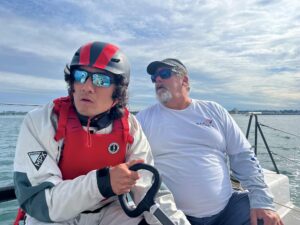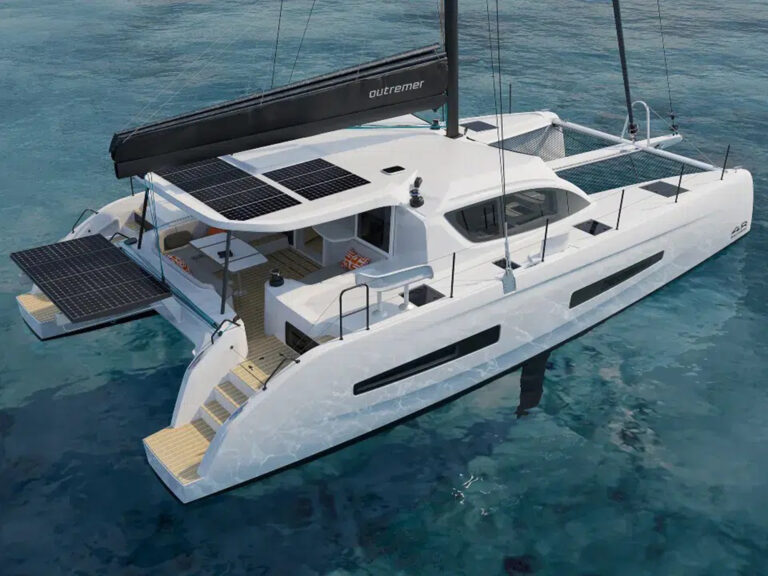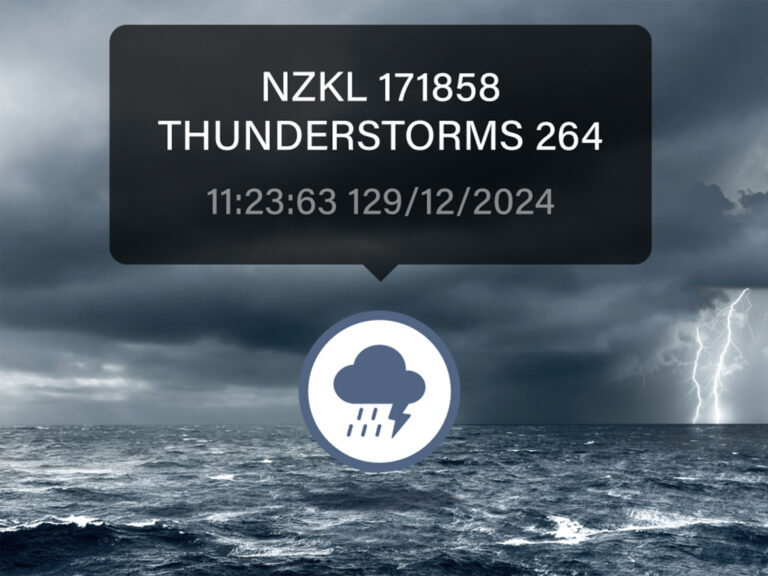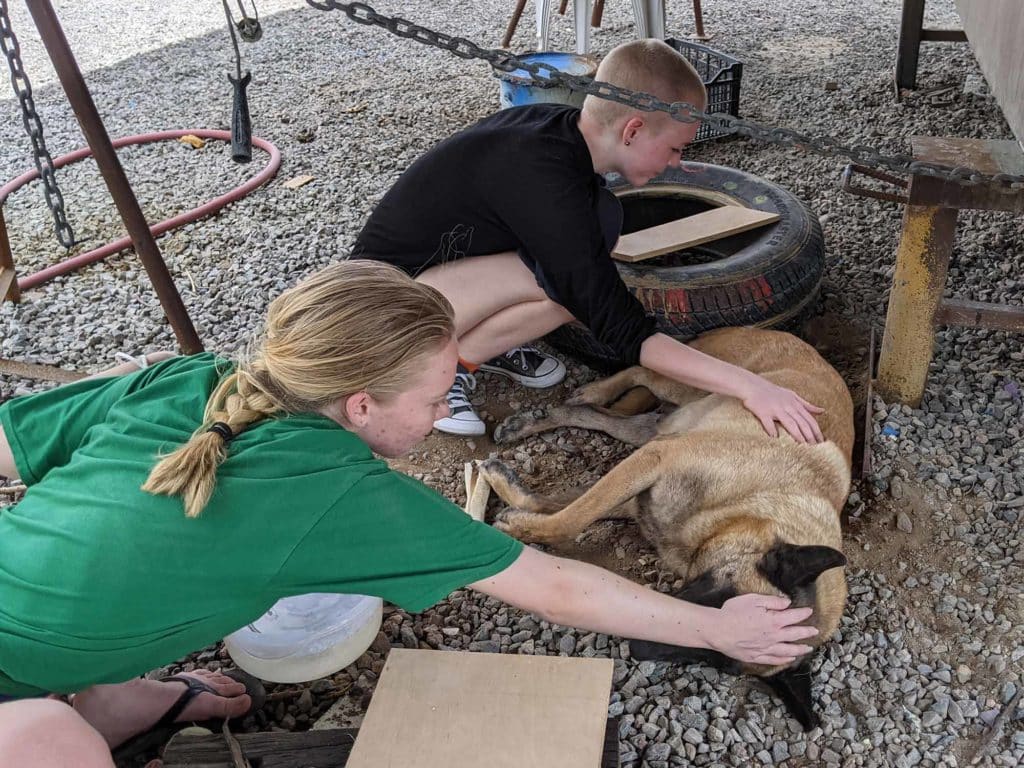
After hours of grinding fiberglass, my dust-covered clothes are tossed in the washing machine on Totem. Washing them twice is my end of the day routine. Totem’s water tank was low, so I put hose to deck fill and opened the tap. As municipal water slowly trickled in, I went below and shifted focus to an article I’m writing while waiting for the first cycle of washing to complete. My head became immersed in the language of safety at sea: how can I communicate techniques to help cruisers think about their approach? In a meditative blink, it was time to start the second round of laundry, then pack up and walk back to our apartment… another exhausting day done.
The next morning, Behan and I drove in to the yard to check with the painters on supplies we needed for priming Totem’s hull. Pancho reported hearing a pump running inside the boat. Weird, I thought, climbing the ladder to check. Sliding the companionway open and looking inside to HOLY FLOATING FLOORBOARDS! Water, water everywhere! Three inches above the floorboards. Shit, I forgot the hose…?!
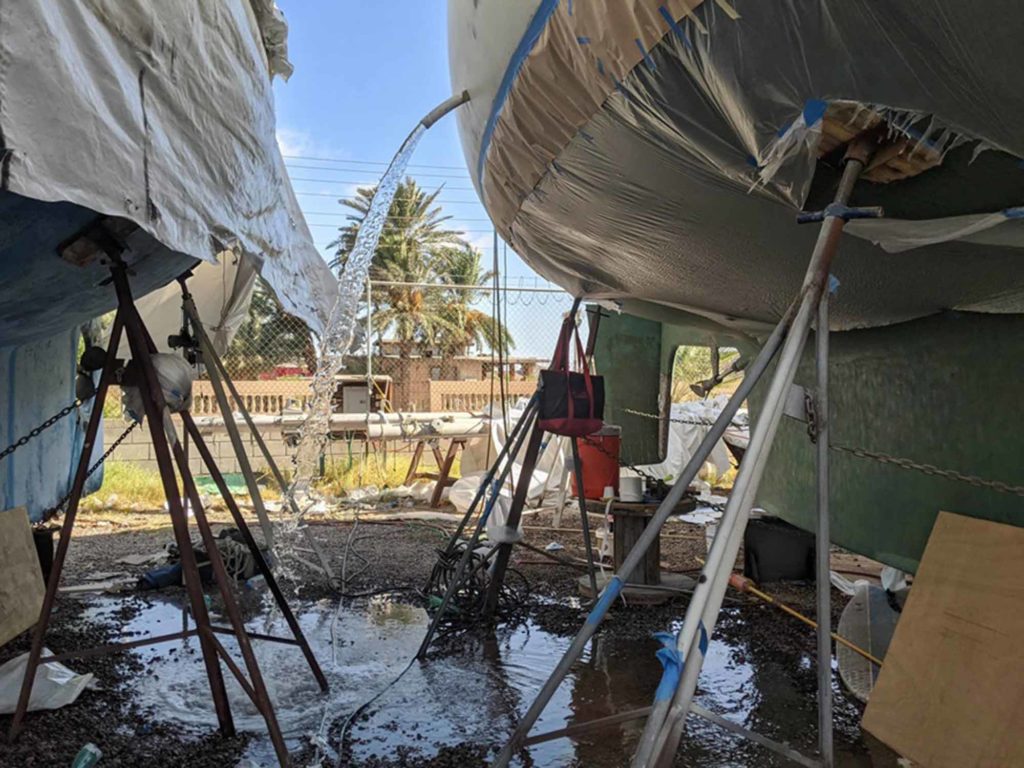
My mistake, and one to recover from and then chuckle over: this was a series of three failure points breached.
- Normally, an overfilled tank would back up the vent and drain overboard, but I had the tank inspection port loosened.
- Normally, the tank overflowing and flooding the boat would activate the bilge pump and send the excess water overboard.
- Normally, we’re not painting our hull, with all through hulls removed. The bilge hose WAS poking through the hull, but it got bumped, pushed, shoved, kicked, coaxed, enticed, seduced… well, who knows!? The point is that this hose no longer exited the boat. Our trusty 4,400 gallon per hour pump bilge worked hard all night, sending water into a closed locker and back down into the bilge.
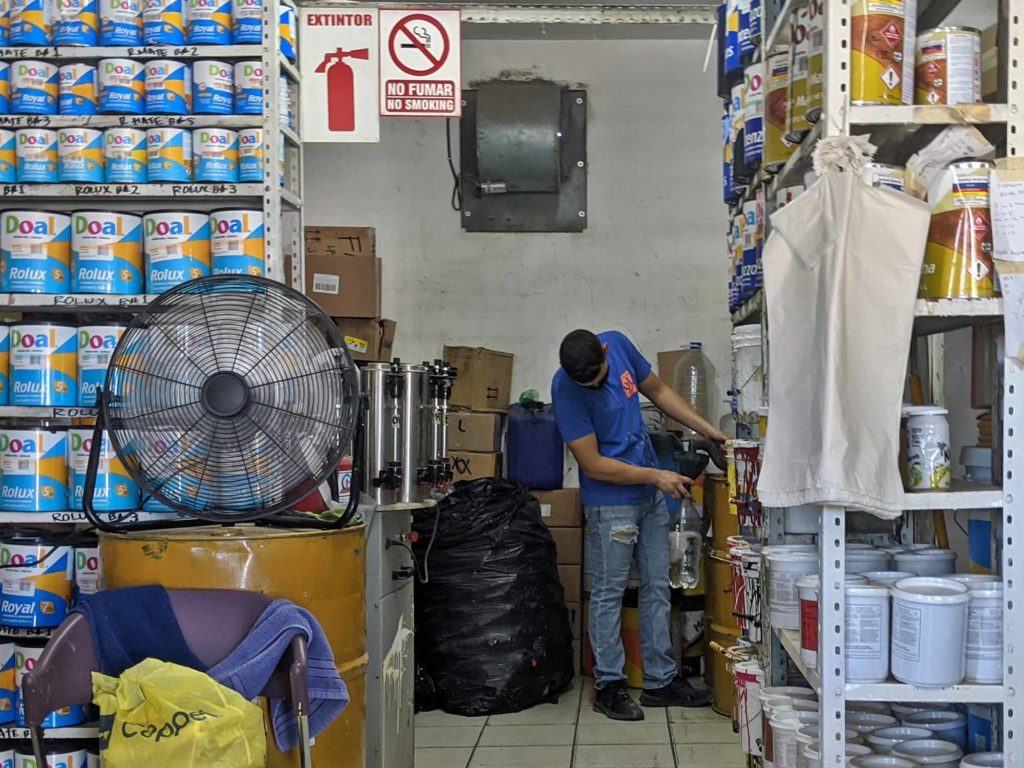
I was well on the way to sinking Totem on dry land! Some days… Water drained and dried and without damage, even the submerged freshwater pump worked fine. And the lesson is? Totem is missing water. We all are…
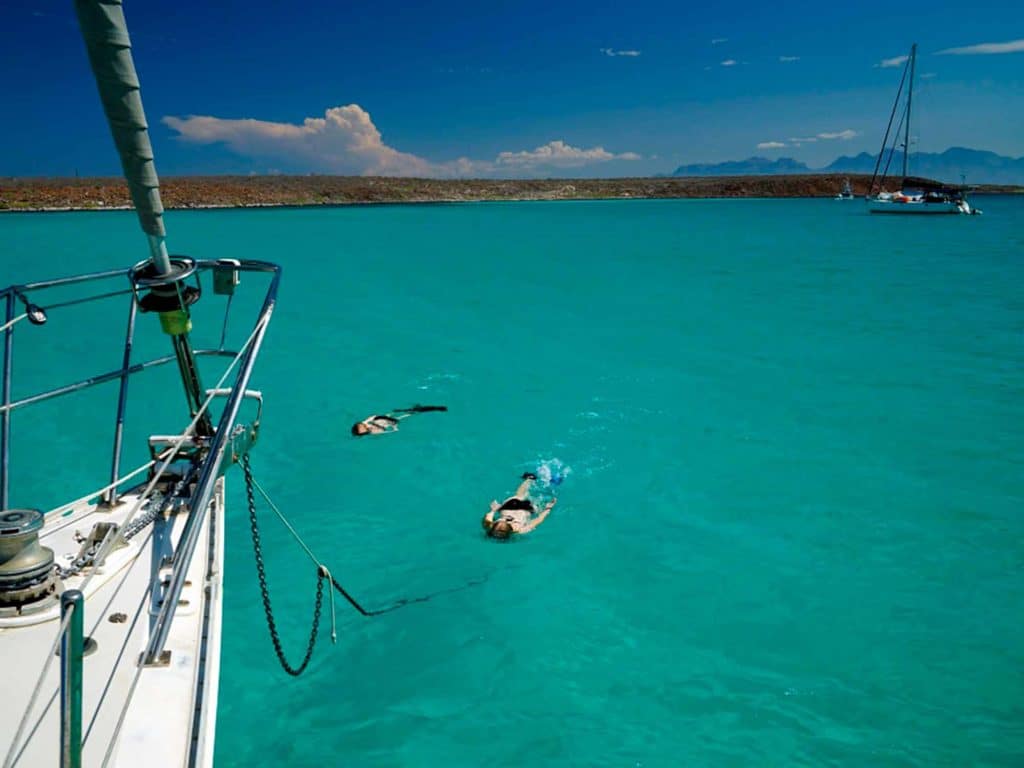
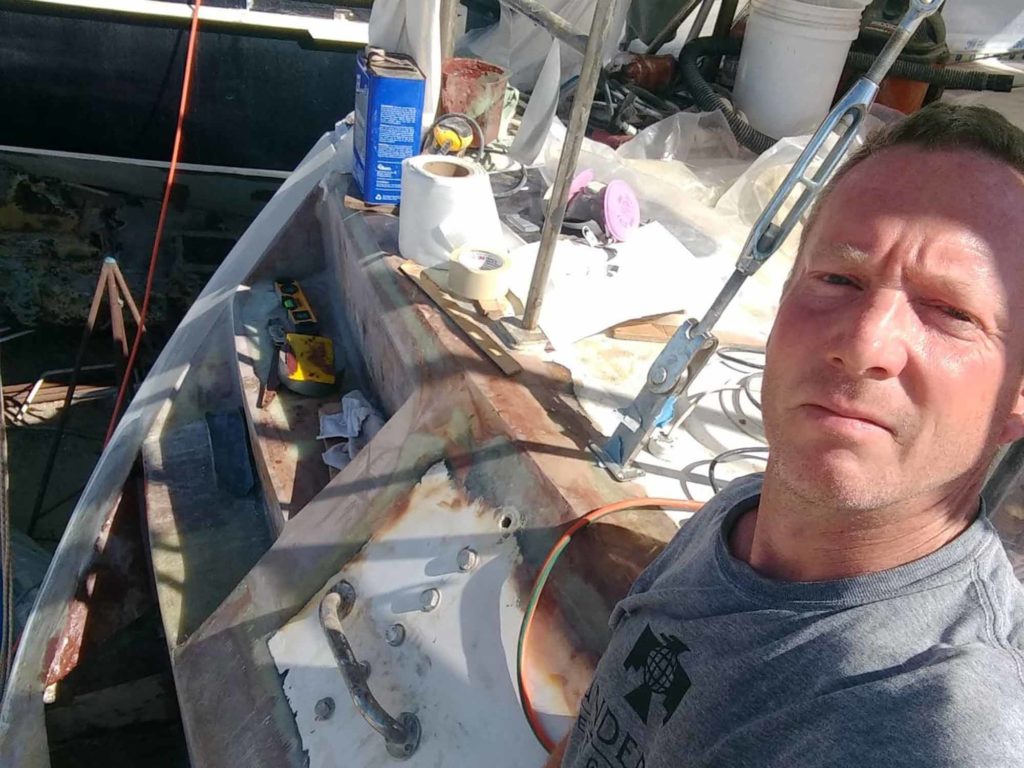
While water cascaded out of Totem, Jamie’s head popped over the rail with an expression somewhere between shock and mirth as he looked down at me and Pancho. Once identified and rectified, what else could we do but laugh at the situation? There’s no damage, or not much; it’s water. The pump for our pressure system was submerged; it dried out and starts, so far. The engine starter may be impacted – right, the engine that we’re removing. Mostly it’s a cleanup job, as our less-than-sparkling bilge contents were distributed around the boat, several inches over the sole. But the wetted wood was dry in hours, thanks to the desert climate.
We all have bad days! And hopefully, you’re not having any like ours lately. There are also good days: the work Jamie’s getting done in the transom is AWESOME. The swim steps are taking shape! He’s been working hard on this, daily. The temperature indexes over 100 daily, and grinding fiberglass isn’t fun in the best of conditions – much less searing sun! Sometimes, the heat and effort might even distract one enough to forget to turn off the water.
Hurricane Nora, Inbound
Meanwhile, another thread of un-invited water looms. Or does it? Hurricane Nora has formed off southern Mexico; it’s getting ready to hip check Banderas Bay on a north/northwest track. Some models show it going right up the Sea of Cortez, straight towards us.
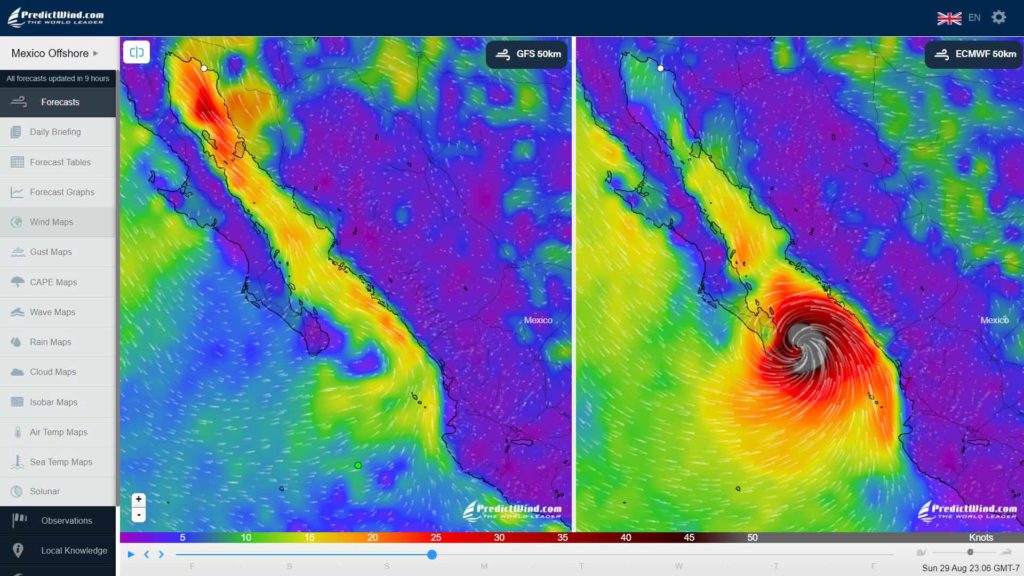
We’re not worried: historical tracks show that this far north, the systems have lost their punch – like Hurricane Marty, in 2003. It’s mostly just a lot of rain. But farther south, where many boats linger, it could be different. With a few days to prepare, as we watch (and hope Nora spins out into the Pacific!) and hope for the best.
For more information: check out weather resources for hurricane season, or because GRIBs don’t represent hurricane conditions well, see real-time tools for watching hurricane conditions.




